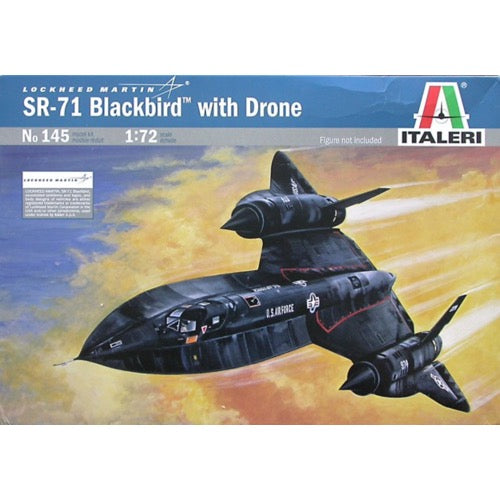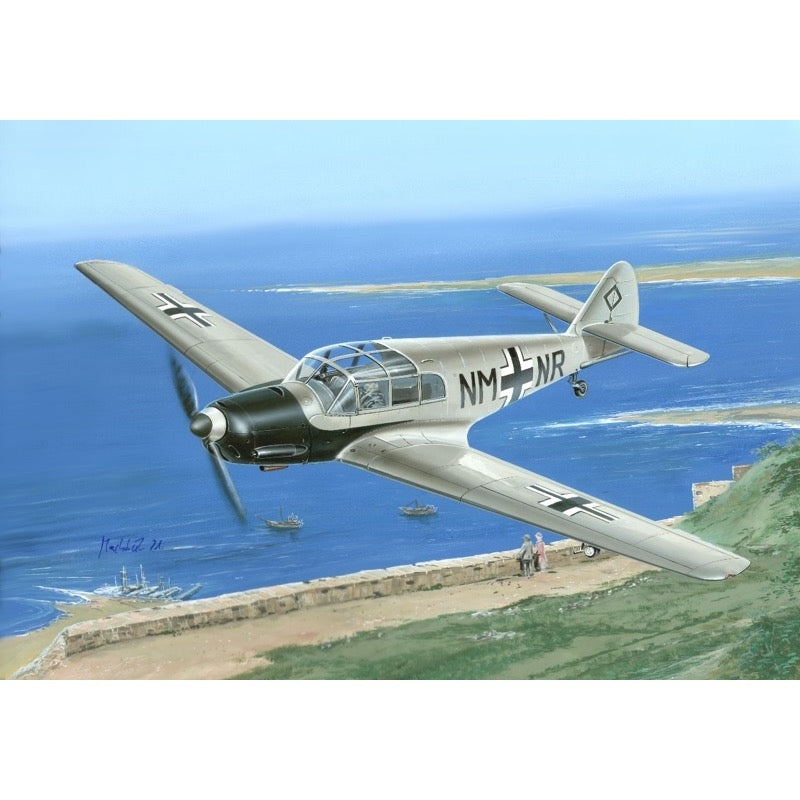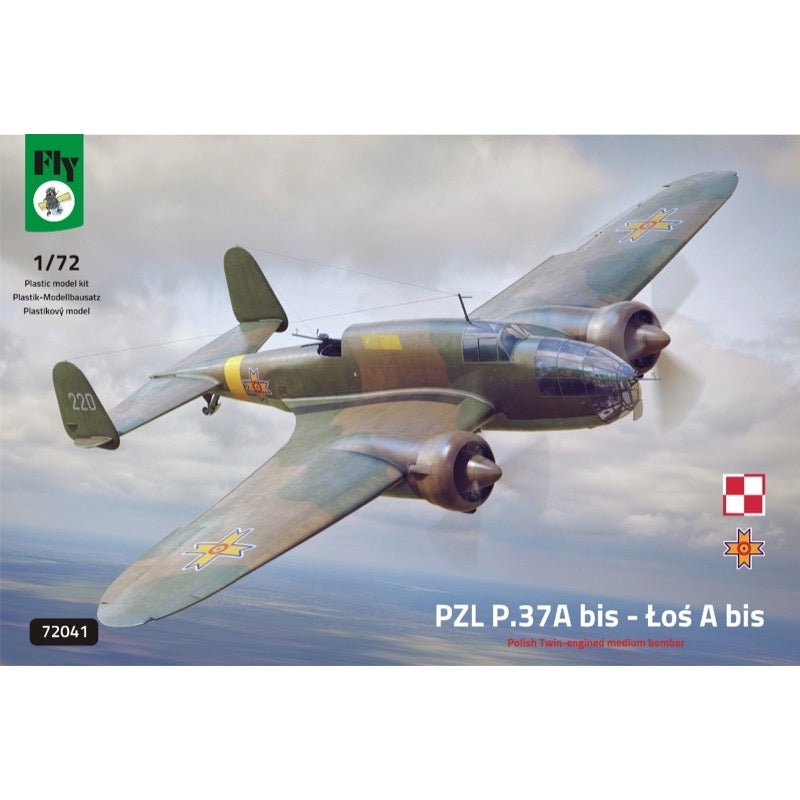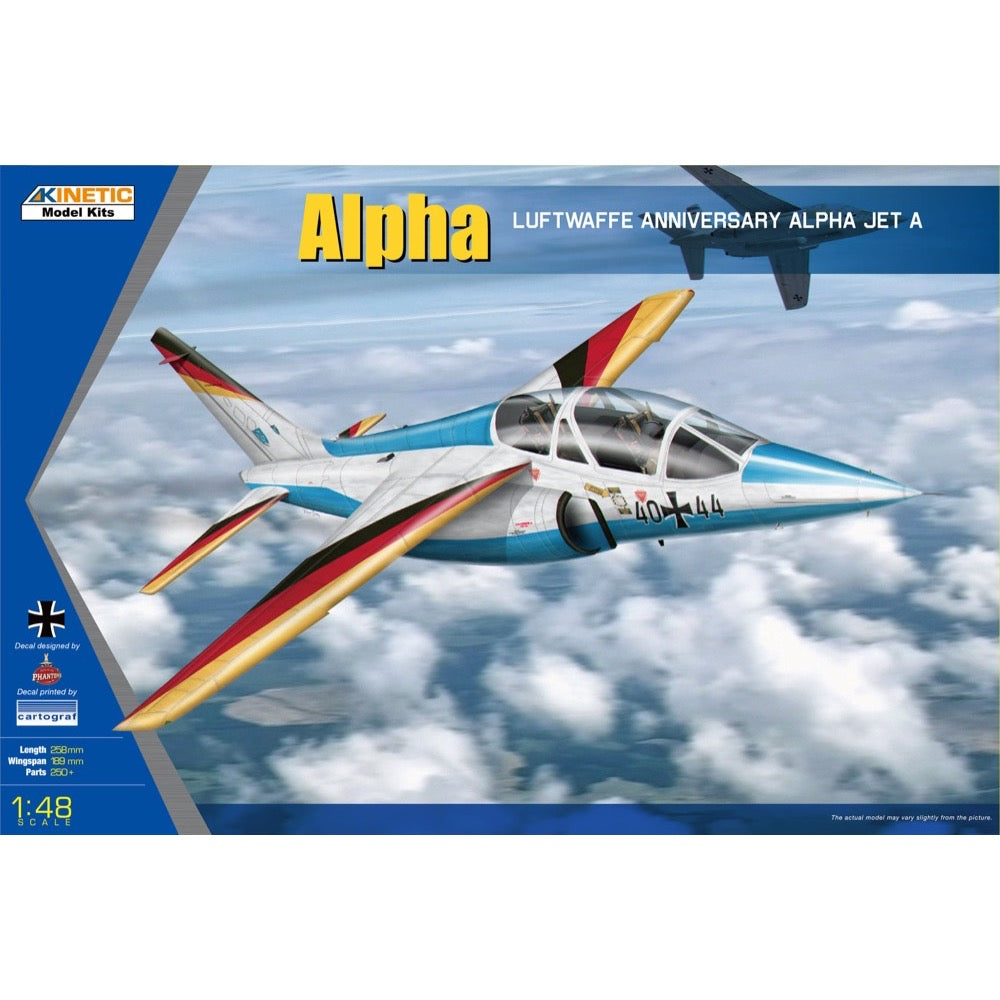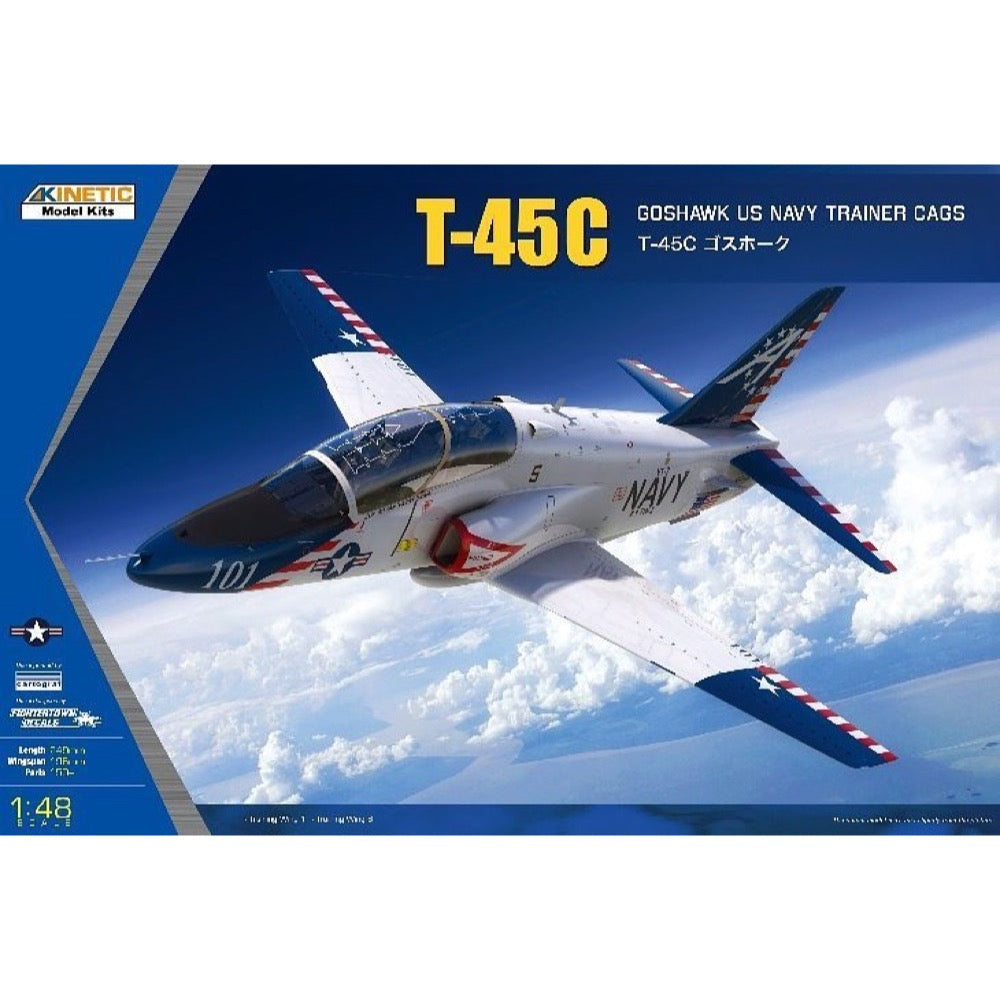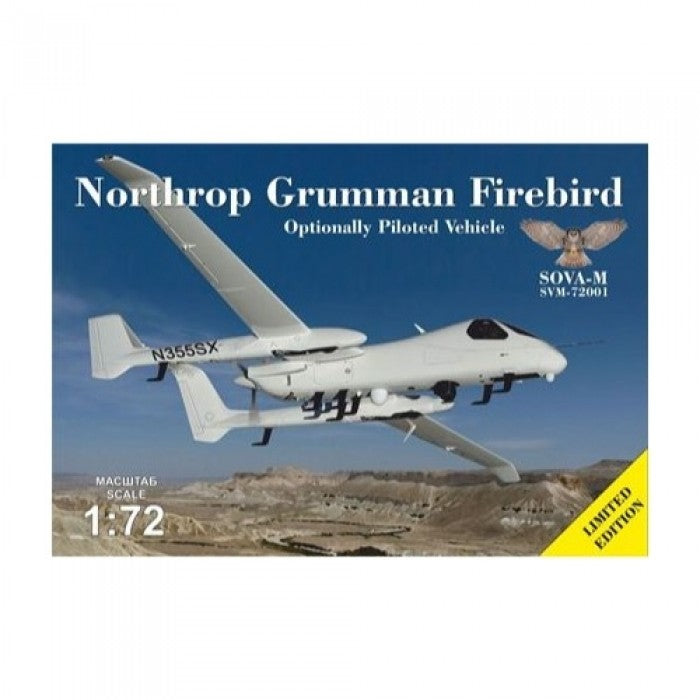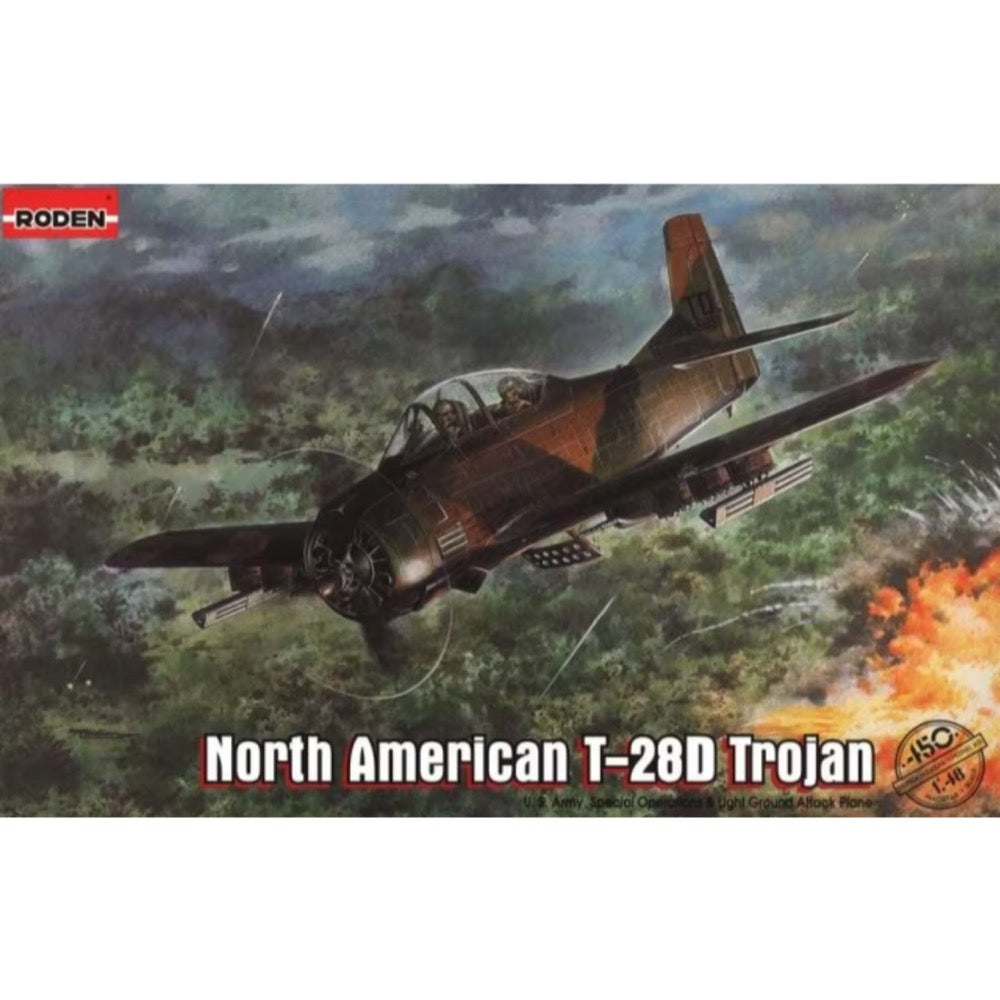
Roden 450 1/48 NA T-28D Coin Verison
Training airplanes in the air forces of any country have always played a very important role. Before being entrusted with combat machines, beginner pilots must pass an obligatory flight test on a trainer to acquire the theoretical skills learnt in the classroom. Quite often, two-seat versions of ordinary fighting machines have been used for this, when future fighter pilots are being prepared for example. However, as a rule, initial flights have been conducted in purpose-built basic trainers.
In the history of America's air arms one of the most epoch-making machines of this class was North American's T-6 Texan, designed before the beginning of WWII and produced in a quantity of more than 15 thousand units. This machine was exported to many countries around the world, and its service lasted until the end of the 1960's. However with the end of the piston-engined era it became clear that a new airplane was needed which could replace the T-6 Texan for basic pilot training. The US Navy had a particular need for a new airplane - the fleet had now become the basis of the country's strategic projected power, and that is why it was necessary to build a machine for the speedy training of the new generation of beginner pilots to co-operate with ships and land an airplane on a carrier deck.
In 1946 the North American firm offered the XSN2J project to the Navy, which had to replace the SNJ (the Navy's name for the T-6). A year later, the Air Force also decided to replace the T-6, and North American quickly modified a prototype to the army specification, becoming the T-28. The first test flights took place in September 1949 and their results more than satisfied the military. North American received an order for 266 machines, designated the T-28A Trojan. The airplane had a classic tandem seating arrangement, a large cockpit with an excellent view, and could carry a variety of ordnance on the pylons under the wings if required. The airplane appeared so successful, that the North American firm soon brought additional manufacturing plants on stream. By the mid 1950's almost 1,200 T-28A's were produced.At this time the American military felt an urgent need for an airplane that could be delivered to 'friendly' countries, and whose production would not require substantial expenditure. The T-28A was already considered out-of-date for the air arms of its own country at the beginning of 1961, but was the most suitable for that requirement. It had a more powerful (1425 hp) R-1820-56S engine, and the wing was strengthened to enable it to carry up to 4,000 pounds gross weight. In underwing pods were set two 0,5 caliber machine guns with 1,000 rounds ammunition each, while it was possible to suspend bombs on six underwing pylons; or rockets, napalm containers, and other ordnance. The increased take off weight included the mounting of 177-gallon underwing fuel tanks. Sights were installed in the cockpit, and also the airframe was toughened up, with armor protection for the crew in the most vulnerable areas.
All these modifications, certainly, affected the flying performance of the T-28, however as a light strike aircraft it proved to be quite a successful machine. North American converted more than 300 T-28A into the new T-28D in total. As had been planned, these airplanes were soon re-equipping satellite countries of the USA in South-East Asia. The T-28D took part in the Vietnam War on the side of South Vietnam, and later they were used by the Air Forces of Cambodia, Philippines and Thailand, typically in operations against insurgents inside the country.
This airplane very quickly gained a solid reputation as a counter-insugency machine, and soon the T-28D was being delivered to the Air Forces of Congo and Ethiopia in Africa, and to Honduras, Bolivia, and Ecuador in Latin America. The ability of the T-28 to operate from the most primitive airstrips and conduct rapid air strikes against partisan groups made this airplane irreplaceable in every respect. The last machines of this type were retired from military service in Third World countries only at the end of the 1980's.
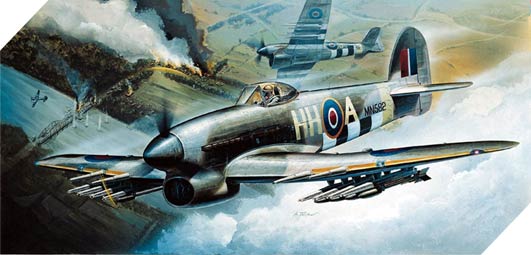
Academy 12462 1/72 Typhoon Mk.IB
The Hawker Typhoon is a British, single-seat, single-engine, metal, semi-shell fighter attack in the low wing structure of the Second World War. Designed in accordance with the requirements set by the British Ministry of Defense in the specification F.18 / 37 of 1937, by the famous designer Sydney Camm. The flight of the prototype took place on February 24, 1940, and the machine entered mass production in 1941. Technical data (Typhoon F.Mk.IB version): length: 9.73 m, wingspan: 12.67 m, height: 4.66 m, maximum speed: 663 km / h, climb speed: 13.59 m / s, maximum range: 821 km, maximum ceiling 10700 m, armament: fixed - 4 Hispano Mk. II 20mm cannons, suspended - up to 908 kg of bombs, 8 RP-3 missiles.
This is an injection-plastic jet aircraft model kit.
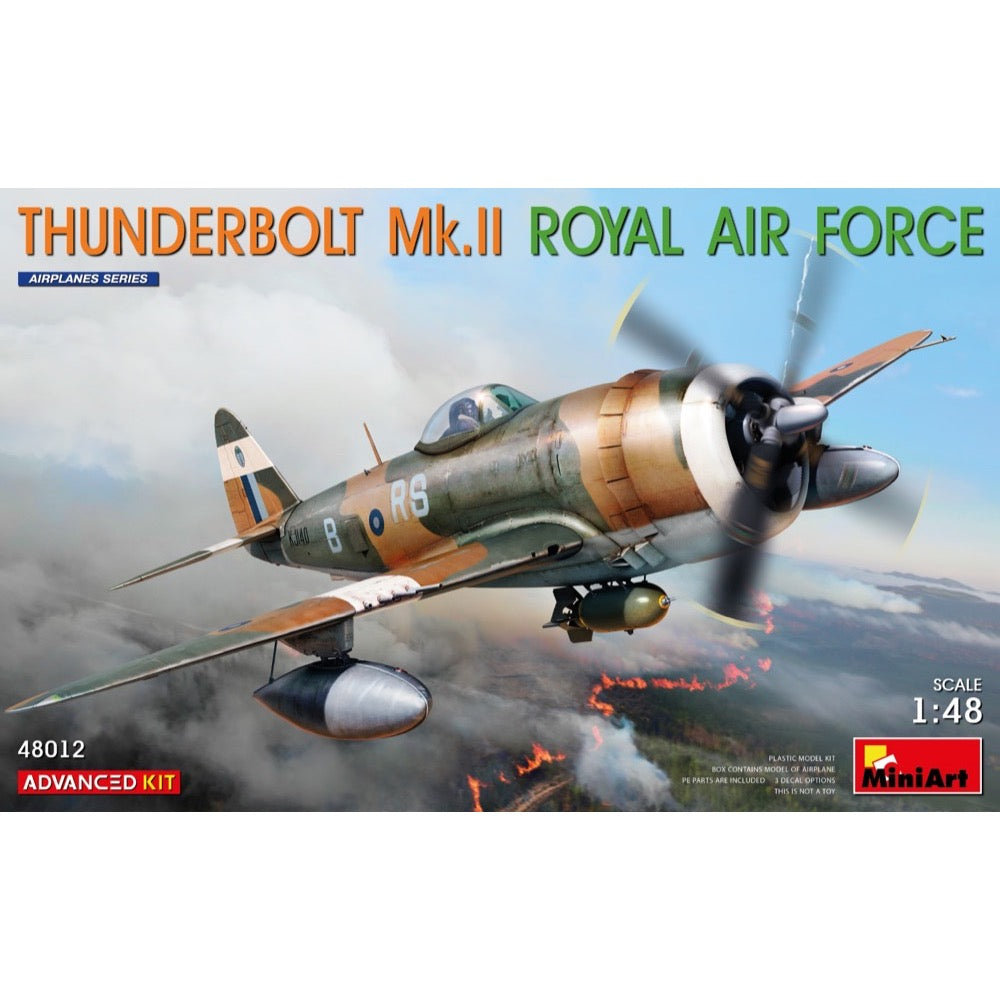
MiniArt 48012 1/48 Thunderbolt Mk.II Royal Air Force
This advanced kit features a highly detailed model of the Thunderbolt Mk.II used by the Royal Air Force.
Features
- Precision Parts: High-quality injection-molded plastic parts.
- Photo-Etched Parts: PE parts for increased realism.
- Decal Options: Three unique decal options to customize your model.
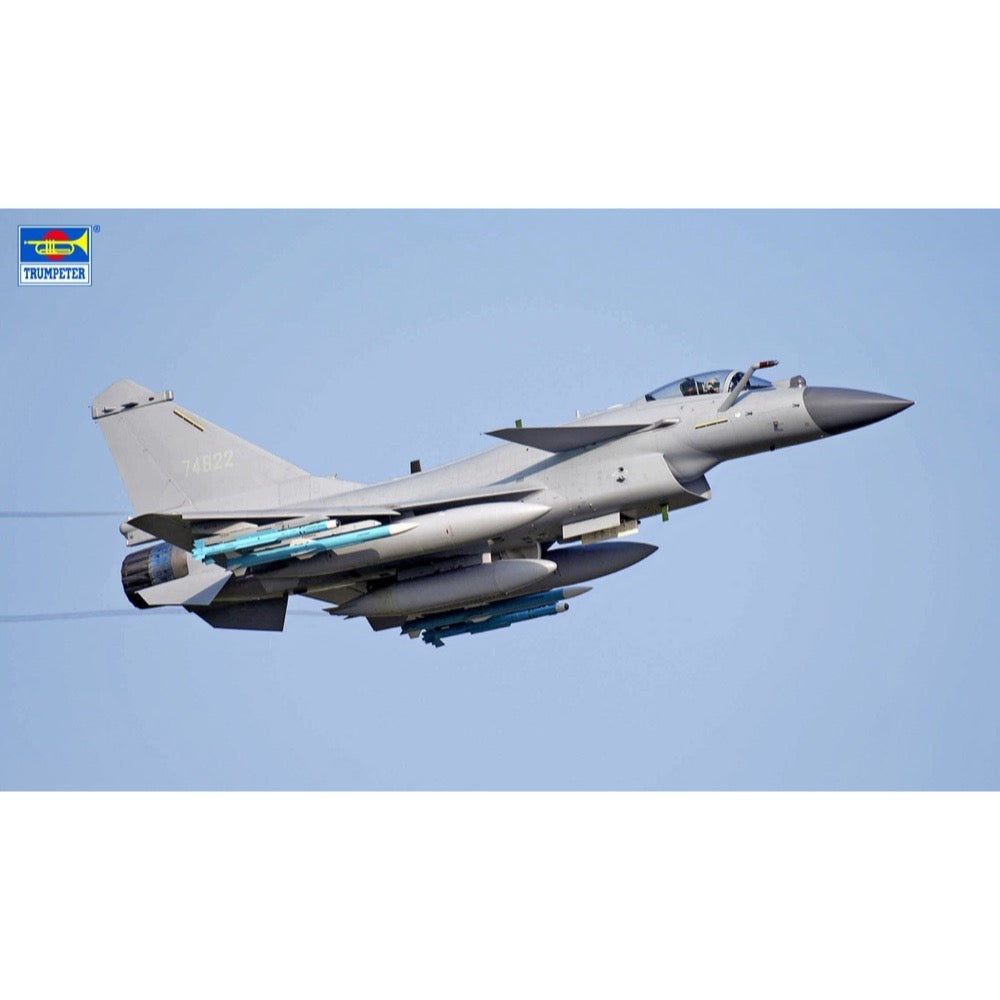
Trumpeter 05826 1/48 PLAAF J-10C Vigorous Dragon
The J-10C uses a DSI inlet, which can ensure flight performance in the transonic speed range. The biggest advantage compared to the J-10A is that the DSI inlet can reduce the structural weight. In appearance, the DSI inlet is the biggest feature of the J-10C. The DSI inlet has become the standard for several Chinese-developed light fighters. The J-10C uses an active phased array radar, which has both powerful "air-to-ground" and "air-to-air" performance, and can also carry a variety of weapons. The J-10C air combat weapons include PL-10, PL-8, PL-12, and PL-15 air-to-air missiles; air-to-ground weapons include KD-88 air-to-ground missiles, YJ-91 anti-radiation missiles, and laser / Satellite-guided bombs can perform both air intercept missions and air-surface missions against ground targets and maritime targets. The multi-purpose capability is greatly improved compared to the J-10A.
Features
- The kit consists of over 230 parts
- Detailed fuselage with accurate design
- Detailed wing with plenty of external loads
- Photo-etched parts for safety belt and rearview mirror
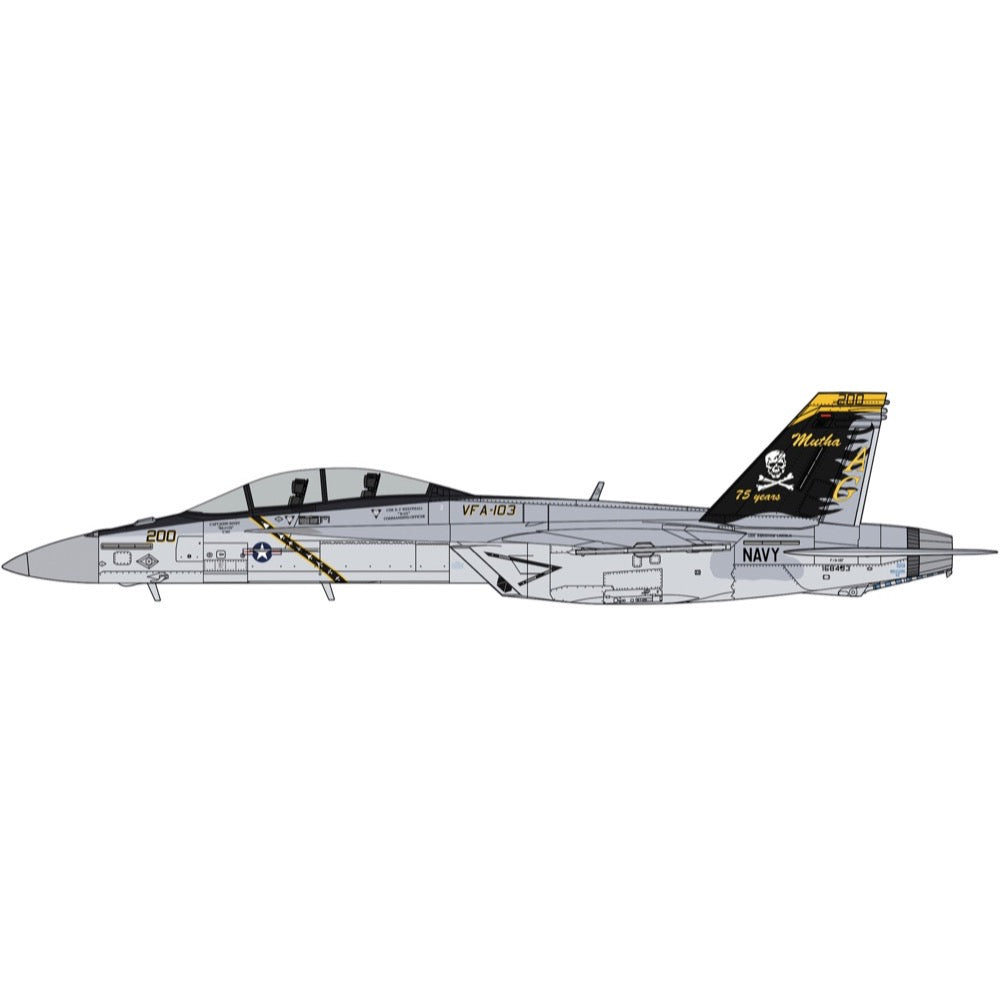
Hasegawa 07552 1/48 F/A-18F Super Hornet "VFA-103 Jolly Rogers 75th Anniversary
This 1/48-scale model kit from Hasegawa reproduces the F/A-18F Super Hornet with Jolly Rogers 75th anniversary markings! Block II parts are included. Decals are included for the U.S. Navy USS Abraham Lincoln 103rd Fighter Attack Squadron "Jolly Rogers" 75th anniversary markings (CAG aircraft) AG200 (2018).
Specification
- Size: 38.3cm long when completed
- Includes: Decals for 1 version

Italeri 2816S 1/48 Mirage III E
The Dassault Mirage III represents a landmark in French aerospace production. Produced from the early 1960s to equip units of the Armée de l'Air, it proved to be extremely effective right from the start. It quickly became a commercial success and was exported to numerous countries, participating in various conflicts during the 1970s and 1980s. Characterized by its distinctive delta wing, it was capable, thanks to its Snecma Atar engine with afterburner, of exceeding Mach 2 speeds. Following the Mirage IIIC, designed for the interceptor role, a multirole and ground-attack version was developed. This led to the Mirage IIIE, characterized aerodynamically by a lengthening of the fuselage to accommodate improved avionics.
Features
- Decals Sheet For 4 Versions
- Color Instruction Sheet
- Figure Not Included


